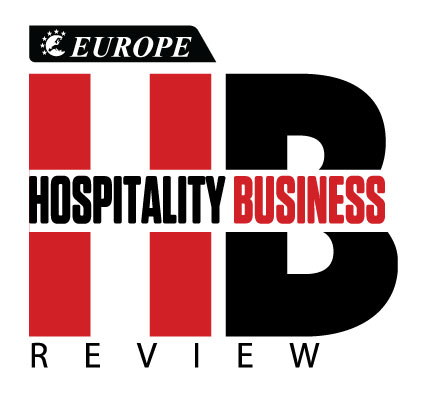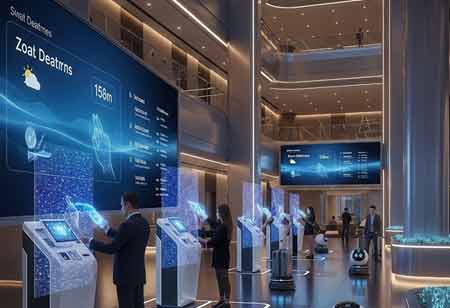Thank you for Subscribing to Hospitality Business Review Weekly Brief
- Home
- Topics
- Automatic Coffee Machines
- Catering and Dining Services
- Hospitality Advisory Services
- Hospitality Construction Services
- Hospitality Consulting Services
- Hospitality Marketing
- Hospitality Procurement
- Hospitality Staffing Services
- Insurance Services
- Travel and Tourism Management
- Vacation Rental Property Management
- Vendor Viewpoint
- News
- CXO Insights
- Conferences
- Newsletter
- Subscribe
- About Us
- CXO Awards
-
Adaptive Reuse as Europe's Hospitality Growth Engine
Adaptive reuse in European urban hospitality transforms underutilised buildings into profitable assets, enhancing sustainability and guest experiences while preserving local culture and architecture.

By
Hospitality Business Review | Thursday, December 04, 2025
Stay ahead of the industry with exclusive feature stories on the top companies, expert insights and the latest news delivered straight to your inbox. Subscribe today.
Europe’s urban centres are witnessing a wave of adaptive reuse, transforming overlooked buildings into hospitality assets that align with market shifts, evolving traveller expectations, and the drive for sustainable development. As investor confidence in the European hotel sector remains robust, developers are increasingly looking beyond traditional greenfield projects to unearth the latent potential within the existing urban fabric.
From a financial perspective, the compelling logic of converting existing structures is undeniable. In many of Europe's densely populated and historically significant cities, the availability of prime land for new construction is scarce and expensive. Adaptive reuse offers a more cost-effective and often faster route to market. By leveraging the existing structural framework, developers can significantly reduce demolition and construction costs, while also navigating the usually complex and lengthy planning permissions required for new builds. This streamlined process enables a quicker realisation of returns on investment, a particularly attractive proposition in the market.
The Art and Science of Repositioning
While adaptive reuse provides the physical canvas, it is the strategic repositioning that breathes new life and commercial vitality into these assets. This goes far beyond a simple refurbishment; it is a holistic reimagining of the property's identity, market position, and guest experience. Successful repositioning hinges on a thorough understanding of the target demographic and their evolving needs and desires.
Today's urban traveller is increasingly diverse, spanning from digital nomads seeking flexible work-live spaces to discerning leisure travellers in pursuit of unique cultural immersion. In response, repositioned hotels are moving away from standardised models and embracing a more bespoke and narrative-driven approach. The history of the building itself often becomes a cornerstone of the brand identity. A former bank may be transformed into a luxury hotel that exudes an aura of old-world opulence and security. At the same time, a converted warehouse could be reimagined as a trendy, industrial-chic aparthotel catering to a younger, more design-conscious clientele.
This narrative is woven through every touchpoint of the guest journey. Interior design plays a pivotal role, celebrating the building's original architectural features while seamlessly integrating modern amenities and comforts. Exposed brickwork, original timber beams, and large industrial windows are no longer seen as elements to be concealed but as character-defining features to be celebrated. This juxtaposition of the old and the new creates a powerful sense of place and authenticity that cannot be replicated in a new-build property.
Technology and Gastronomy as Game-Changers
In the contemporary hospitality landscape, the quality of the physical space is intrinsically linked to the quality of the experience. Technology is a key enabler in this regard, offering opportunities to enhance guest convenience and personalise the stay. In repositioned hotels, technology is often deployed discreetly and intuitively, respecting the historical integrity of the building while providing the seamless connectivity and functionality that modern travellers expect. This can range from mobile check-in and keyless entry to in-room tablets that control lighting, temperature, and entertainment systems.
Food and beverage (F&B) has also emerged as a critical component of the repositioning strategy. No longer just an ancillary service, a thoughtfully curated F&B offering can transform a hotel into a destination in its own right, attracting not only guests but also the local community. By creating vibrant restaurants, bars, and cafes that reflect the local culinary scene, hotels can foster a sense of community and generate significant ancillary revenue. In many adaptive reuse projects, the F&B spaces are designed to serve as social hubs, blurring the lines between the hotel and the surrounding neighbourhood and further enhancing the property's appeal as an authentic local landmark.
A Sustainable Future for Urban Hospitality
The emergence of adaptive reuse and repositioning within European urban hospitality is a powerful demonstration of the industry's enduring resilience, innovative spirit, and unwavering dedication to fostering a more sustainable future. This transformative approach, at its heart, goes beyond mere renovation; it is about imbuing existing structures with renewed purpose and vitality.
This methodology stands as a testament to a multifaceted strategy that delivers substantial benefits across several critical dimensions. Financially, adaptive reuse can often be more cost-effective than new construction, as it reduces material consumption and streamlines regulatory processes, leading to quicker market entry and more substantial returns on investment. Environmentally, it embodies a commitment to circular economy principles, significantly reducing carbon footprints by minimising demolition waste and reducing the demand for new building materials, while also often incorporating energy-efficient upgrades. Experientially, these reimagined spaces frequently offer an unparalleled sense of character and authenticity that modern, purpose-built hotels struggle to replicate. From converted monasteries to former industrial warehouses, each property tells a unique story, providing guests with a richer, more immersive connection to the history and culture of their destination. This holistic approach ensures that the industry not only thrives economically but also makes a positive contribution to urban renewal, cultural preservation, and environmental stewardship, thereby solidifying its role as a leader in sustainable development.
As the European hospitality market continues its evolution, the capacity to unearth intrinsic value within existing assets will prove a decisive factor for prosperous investors and operators. The transformative resurgence of these previously disregarded structures not only reconfigures the urban fabric but also redefines the fundamental nature of a hotel—a nexus of historical significance, communal engagement, and genuine interaction. This pioneering methodology is unequivocally positioned to assume an increasingly prominent role in the trajectory of urban development and hospitality throughout the continent.







